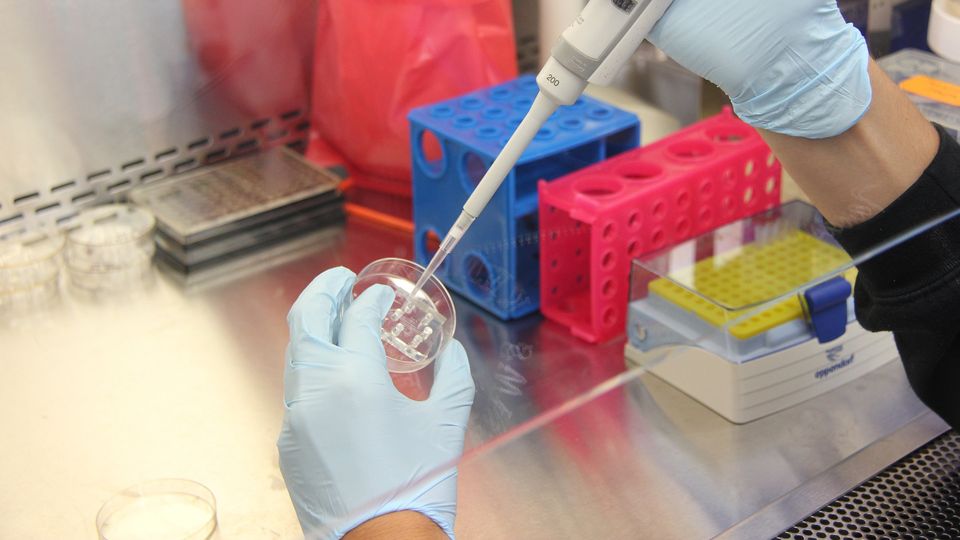Enhancing T-Cell Therapy: Breakthroughs in Rapid Sterility Testing
Novel technique, combining long-read sequencing and machine learning, accurately identifies contaminants in 24 hours

Complete the form below to unlock access to ALL audio articles.
Researchers at the Critical Analytics for Manufacturing Personalized-Medicine (CAMP) Interdisciplinary Research Group (IRG) of Singapore-MIT Alliance for Research and Technology (SMART), MIT’s research enterprise in Singapore, have developed a groundbreaking method for rapid sterility testing in T-cell cultures. This novel technique, combining long-read nanopore sequencing and machine learning, accurately identifies contaminants within 24 hours— compared to the traditional 7–14-day timeframe. This innovation, published in Microbiology Spectrum, will help accelerate treatment delivery and improve outcomes for patients undergoing cell therapy for incurable diseases.
Speeding up sterility testing for safer therapies
In the burgeoning field of cell therapy, particularly for treatments like CAR T for blood-related cancers, ensuring the sterility of living medicines is crucial. Current sterility testing methods, though effective, are time-consuming – taking up to two weeks. This prolonged period can be detrimental to patients who require timely treatment. Recognizing this gap, our team at SMART CAMP aimed to accelerate this process significantly without compromising accuracy. Our motivation was to enhance the safety and efficiency of cell therapy manufacturing, reducing patient risk and streamlining production. This advancement not only benefits patient health by ensuring the rapid availability of safe treatments but also holds the potential to influence the entire biopharmaceutical manufacturing process for all cell products.
Combining long-read sequencing technology with machine learning
Our team employed advanced third-generation nanopore long-read sequencing technology, coupled with machine learning algorithms, to develop a rapid and precise sterility testing method. This approach involved extracting DNA from T-cell cultures and analyzing it through our sequencing methodology, which can detect even low-abundance microbial contaminants. By integrating computational analysis and optimization, we were able to distinguish between clean and contaminated samples effectively. The key innovation lies in the method's ability not only to detect fungal and bacterial presence but also accurately identify the specific species causing contamination. This methodology significantly outperforms traditional sterility tests in speed without sacrificing the precision vital for patient safety.
The key findings of the paper were:
- Rapid detection of contaminants in T-cell cultures within 24 hours.
- Accurate identification of microbial species causing contamination.
- Superior performance compared to traditional sterility tests taking 7–14 days.
- Effective detection of low-abundance microbial contaminants.
- Potential to transform biopharmaceutical manufacturing and patient outcomes.
Impacting patient safety and manufacturing efficiency
This research marks a significant step forward in the field of biopharmaceutical manufacturing and cell therapy. By drastically reducing the time required for sterility testing, we can ensure faster availability of safe, effective treatments for patients. Our method's ability to identify microbial species accurately is not just a technical achievement; it has practical implications for improving quality control processes within manufacturing. This level of precision in identifying contaminants helps in diagnosing potential issues in the production line, leading to more efficient remediation strategies. The broader impact of this research is multifaceted—it enhances patient safety, reduces production downtime and could potentially accelerate product-to-market timelines. For patients, especially those in urgent need of cell therapy treatments, this method could be lifesaving.
Our rapid sterility testing method represents a paradigm shift in biopharmaceutical manufacturing and patient care. It enhances the safety and reliability of cell therapy products, ensuring quicker delivery of treatments to patients. This innovation could significantly impact patient outcomes, particularly in the field of cancer treatment, where cell therapies like CAR T are crucial. Furthermore, the method's potential to improve manufacturing processes and reduce product validation time is a game-changer for the industry, promising greater efficiency and cost-effectiveness. Finally, this methodology can be expanded to other cell therapies, including induced pluripotent stem cell therapies.
While our method significantly improves upon traditional sterility testing, it is still in its early stages, and more work is being done to address its limitations. The integration of this new method into existing manufacturing processes poses a substantial challenge, requiring adjustments and thorough validation. While effective in identifying bacterial and fungal contaminants, the method’s extension to reliable viral detection is yet to be developed.
Scaling this method for industrial applications without compromising accuracy or speed is another crucial aspect. Importantly, our method faces challenges in mitigating false positives – a common issue in advanced sequencing techniques. This includes managing kitome – contaminants from the testing kits themselves, addressing potential cross-contamination and refining our machine-learning algorithms to identify and reduce incorrect classifications of microbial species. As the field of cell therapy continues to evolve, alongside its regulatory landscape, the need for ongoing improvements in both the speed and accuracy of our testing methods remains a pivotal focus to ensure the utmost safety and efficacy of cell therapies.
Advancing sequencing accuracy and setting new rapid testing standards
We plan to address current limitations by implementing bisulfite conversion for DNA labeling, and using newer flow cell chemistry, which could enhance the accuracy of our sequencing. Each step, from sample to library preparation, will undergo optimization to minimize sources of error. We are also looking into the pre-filtering of sequenced reads to accelerate the informatics workflow. Adopting best practices, such as biosafety level 2 (BSL-2) hoods, will ensure safety and reliability. Computationally, we aim to analyze coverage more deeply and differentiate between valuable reads (like amplicons from cpn60, 16S-23S, 18S-28S) and other sources. These steps are crucial for evolving our method into an even faster, more reliable tool, potentially capable of detecting viral contaminants and setting new standards in rapid sterility testing for biopharmaceuticals.
Reference: Strutt JPB, Natarajan M, Lee E, et al. Machine-learning driven detection of adventitious agent detection in T cell cultures using long read sequencing. Microbiol Spectrum. 2023;11(5). doi:10.1128/spectrum.01350-23




